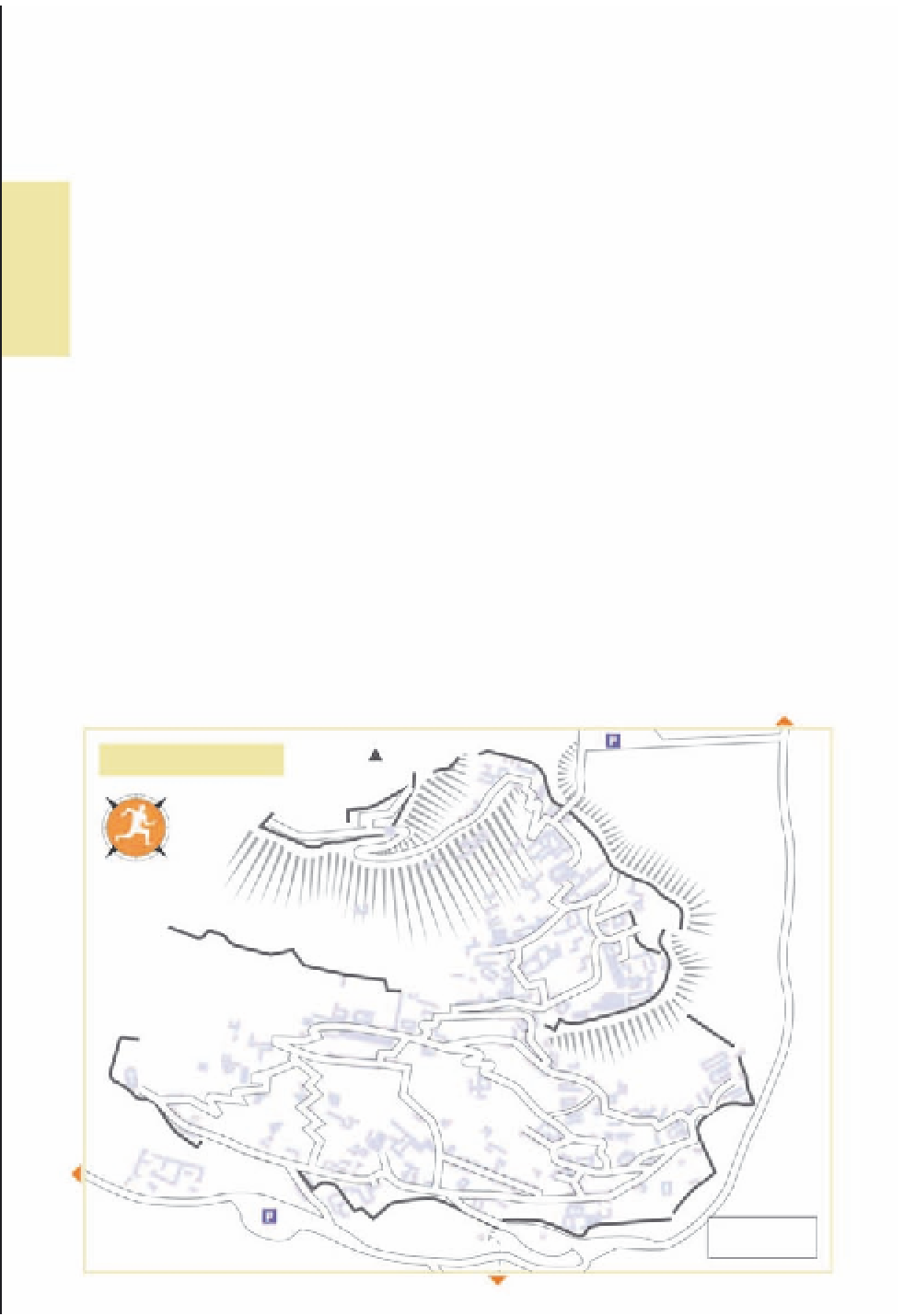Travel Reference
In-Depth Information
once sheltered a population of some 20,000, and through which you can now wander.
Winding alleys lead through monumental gates, past medieval houses and palaces and
above all into the churches, several of which yield superb if faded frescoes. The overall
effect is of straying into a massive unearthing of architecture, painting and sculpture
- and into a different age with a dramatically different mentality.
ARRIVAL AND INFORMATION
MYSTRA
By bus
Buses run from Spárti to the lower Mystra site
entrance, (10 daily; 30min) and usually go up to the top, as
well, saving a considerable climb; buses stop en route at
the modern village of Néos Mystrás, 500m from the lower
entrance.
Orientation
The site of the Byzantine city comprises three
main parts: the Káto Hóra (lower town), with the city's
most important churches; the Áno Hóra (upper town),
grouped around the vast shell of a royal palace; and the
Kástro (castle). There are two entrances to the site, at the
base of the lower town and up near the Kástro; once inside,
the site is well signposted. A road loops up from the
modern village of Néos Mystrás to Trýpi, passing near both
upper and lower entrances.
Accommodation and eating
There are no facilities at
the site itself, so it's best to base yourself at nearby Néos
Mystrás (see p.170). It's a good idea to stock up on
refreshments before setting out: there's a mobile snack-bar
at the lower gate, serving freshly pressed orange or lemon
juices, but nothing in the site itself.
2
Brief history
In 1249, Guillaume II de Villehardouin, fourth
Frankish
prince of the Moreas, built a
castle here - one of a trio of fortresses (the others at Monemvasiá and the Máni)
designed to garrison his domain. The Franks, however, were driven out of Mystra by
the
Byzantines
in 1262, and by the mid-fourteenth century this isolated triangle of
land in the southeastern Peloponnese, encompassing the old Spartan territories, became
the
Despotate of Mystra
. This was the last province of the Greek Byzantine empire and,
with Constantinople in terminal decay, its virtual capital.
During the next two centuries, Mystra was the focus of a defiant rebirth of Byzantine
power before eventual subjugation by the Turks in 1460, seven years after the fall of
Constantinople. Mystra remained in Turkish hands until 1687 when it was captured,
Trýpi & Kalamáta
MYSTRA
Walls
633m
KÁSTRO
Kástro
Upper Entrance
Walls
Ayía Sofía
Náfplio
Gate
ÁNO HÓRA
(UPPER TOWN)
Palatáki
Walls
Áyios
Nikólaos
Despots'
Palace
Pandánassa
Convent
Monemvasiá
Gate
Mosque
Refectory
Perivléptos
Monastery
Odhiyítria
Vrondohión
Monastery
KÁTO HÓRA
(LOWER TOWN)
House of
Frangopoulos
Laskaris
House
Krevatás
House
Áyios
Khristóforos
Evangelístria
Ayií
Theódorii
Marmara
Fountain
Walls
Mitrópolis
Lower
Entrance
0
100
Toilet
Museum
Canteen
metres
Path to Spárti


































































